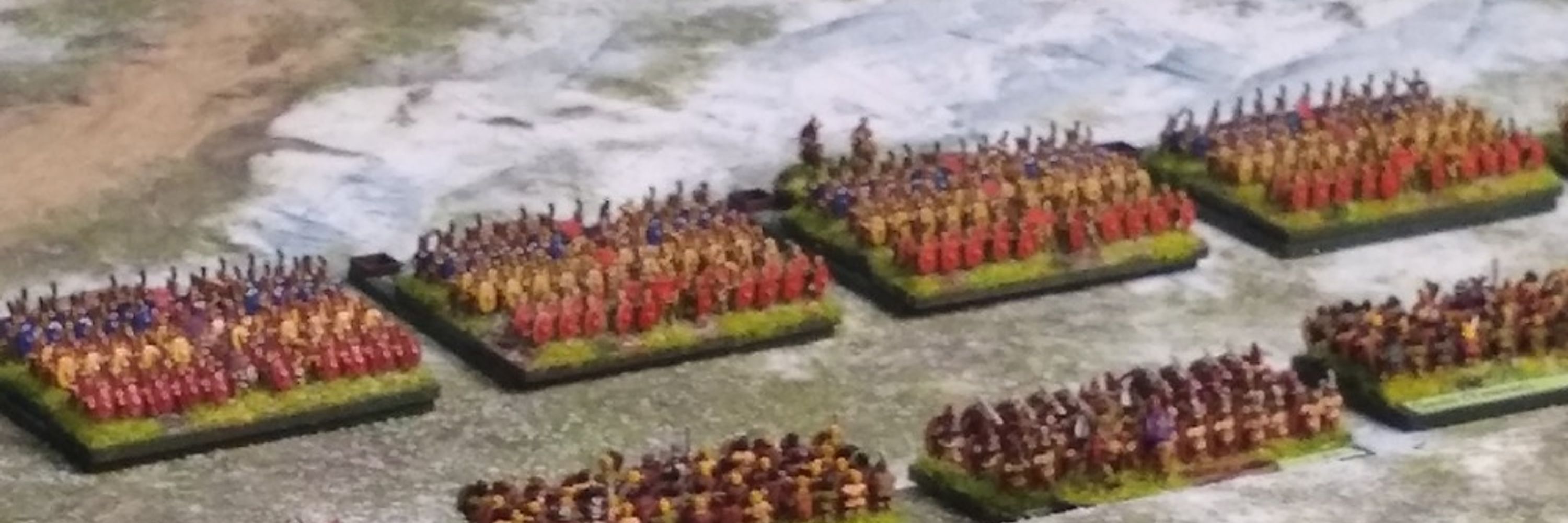The Battle of Swanage Bay – 23rd April 1471
There’s something satisfying about reimagining history, especially when it involves a stretch of coastline that never actually hosted a battle. The Battle of Swanage Bay was one such “what if” encounter: a desperate clash where the Lancastrians, cornered against the sea, tried to stave off Edward IV’s advancing Yorkist host. The scenario was set in April 1471, during the later stages of the Wars of the Roses. Our imaginary confrontation placed Somerset’s Lancastrian army with its back to the water, scrambling to form a defensive line on the gentle slopes above Swanage Bay.
Somerset commanded the centre, Devon held the left, and the Prince of Wales (the ill-fated Edward of Westminster) oversaw the right flank, entrenched around the small coastal town. Their goal was simple enough: hold their ground long enough to regroup, or better yet, break out before being driven into the sea. Facing them were the Yorkists: King Edward IV commanding the central force, the Duke of Gloucester (the future Richard III) supporting to his right, and Lord Hastings leading the flanking column moving on the town.
I took command of Somerset and Devon’s Battles, while Surjit commanded the Prince of Wales in the town. Across the table, Colin controlled both Edward IV and Gloucester, while Richard handled Hastings’ assault on the Lancastrian right.
The Lancastrians’ predicament was clear — there was nowhere to retreat. Our line needed to move off the beach and occupy the high ground before the Yorkists brought their superior numbers to bear. My archers and crossbowmen were our best asset, and getting them onto the hill would let me make the most of their range. Meanwhile, the Prince of Wales took a defensive stance within the town, using its barricades and narrow streets to slow Hastings’ advance. The plan was to anchor our right on the town, hold the centre, and hope my archers could thin the Yorkist ranks before they reached us.
Across the table, the Yorkist plan was more straightforward: Hastings would smash into the town and try to collapse our right flank, while Gloucester and Edward IV would press our centre and left, driving us back toward the shoreline. This game promised to be a brutal, close-range tussle... as it turned out, that was partly true.
Fortune briefly smiled on the Red Rose. We won initiative for the first and only time that day, but it turned out to be decisive. My archers loosed a deadly opening volley, and Colin’s Yorkist archers immediately began to suffer. My dice were on fire, and within a couple of turns, his bowmen were either broken or reduced to a shadow of their former selves.
With the enemy’s missile fire blunted, I began to feel cautiously optimistic. Surjit’s archers in the town were also holding their own, their defensive position making them hard to reach. However, Hastings’ troops were pressing in, and one of the Prince’s Shire Archer units took enough casualties to trigger a morale check, which, unfortunately, they failed. The Prince’s command faltered. Forced to retire a full move, his troops gave ground, abandoning the strong defensive position in the town. Suddenly, our right flank was in trouble.
We paused briefly to consider our options. Surjit would need to fall back in good order, giving himself room to reform. The hope was that Hastings’s men, needing to change formation to enter the town, would lose momentum and give us breathing space. That was the plan, at least, but the dice gods had other ideas.
While chaos unfolded on our right, I redoubled my efforts on the left. My crossbowmen wiped out a unit of Yorkist handgunners belonging to Gloucester’s Battle, while my longbowmen concentrated on a group of lightly armoured Billmen. The results were devastating. In a couple of volleys, the Billmen were cut down, forcing Gloucester’s entire Battle to take a morale test. Colin picked up the dice with a look of grim determination, rolled… and scored a six, the worst possible result.
In one glorious moment of Lancastrian luck (and Colin’s despair), Gloucester’s entire command collapsed, routing off the field. Retinue archers, billmen, and handgunners all scattered, leaving Edward IV’s men suddenly exposed and unsupported in the centre. With Gloucester’s Battle gone and Hastings’ assault facing a slog through the town, the writing was on the wall for the Yorkists. They could have fought on, but discretion won out over valour. Edward IV wisely called a withdrawal, saving what remained of his force for another day.
For the Lancastrians, it was a much-needed victory, though one that came as much from good dice as good tactics. Somerset’s centre held firm, Devon’s flank performed admirably, and the Prince of Wales’ men, though battered, lived to fight another round (on another gaming night). From a gaming point of view, the Battle of Swanage Bay was a delight; unpredictable, cinematic, and full of drama. It captured everything that makes the Wars of the Roses such fun to play. The fragile balance between morale and mayhem, the way a single unlucky roll can unravel a seemingly solid plan, and the constant push and pull of medieval warfare.
It also reminded me that even a “what if” battle can tell a compelling story. The idea of the Lancastrians making a desperate stand on the Dorset coast (archers firing from the dunes, the sea at their backs) feels perfectly plausible within the ebb and flow of that chaotic civil war. In the end, the Red Rose triumphed at Swanage Bay, and although history might not record it, our dice certainly did.























